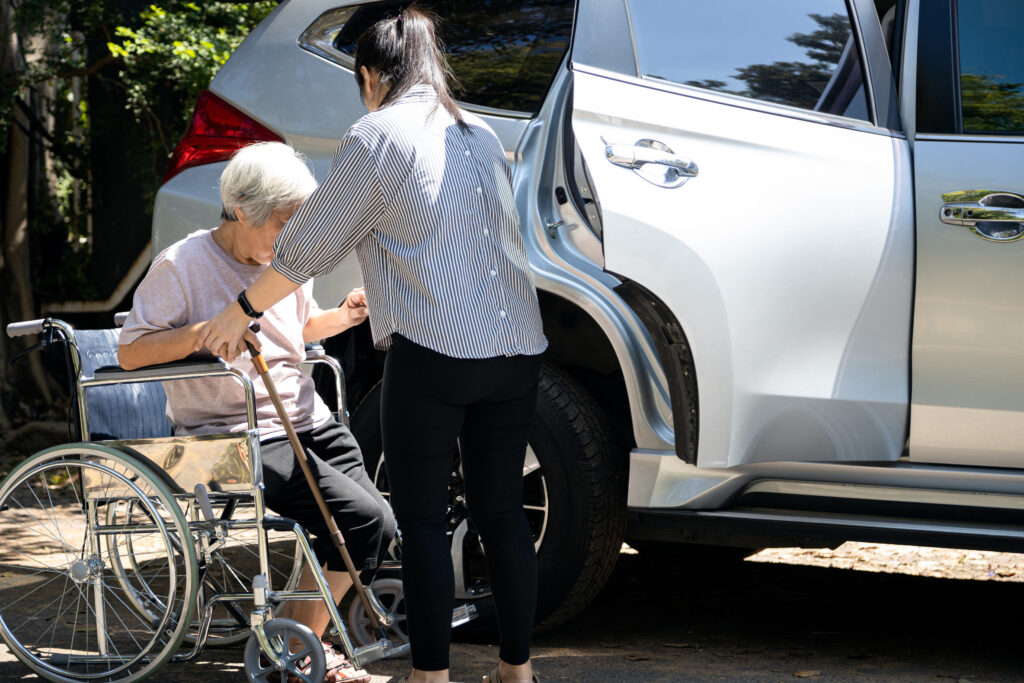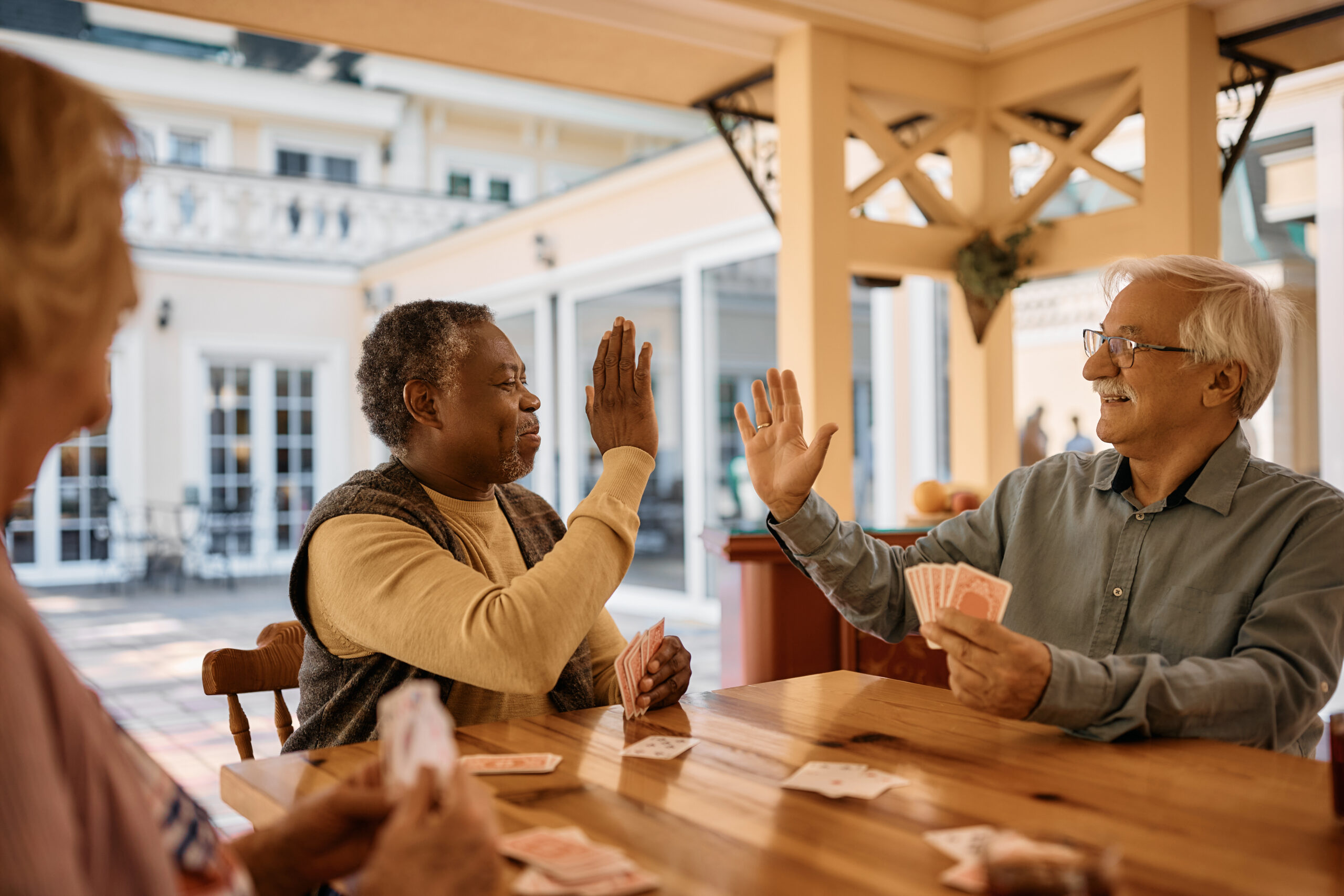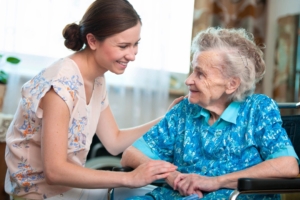A neighborhood can play a big role in healthy aging. Whether it is a new home in a new neighborhood or a senior housing community or apartment, where you live affects your day-to-day life as you grow older. The right environment keeps you active, connected, and safe.
Below, we’ll explore 5 neighborhood features that support healthy aging, so you can recognize them in your own area or advocate for changes that can make a difference.
We will mention several times about your county government office on aging. This is a great place to start before a move. Contact this office when considering a move to find out what is available in the county and what resources might be available in the new area you are looking at. Do this first in planning for a potential move. There are Realtors that are certified in working with our aging adults. This may be something to ask.
For more assistance consider our Free Guide and Checklist to help plan and make the move less stressful.

1. Accessible Public Transportation
Getting around becomes trickier as we age. Not everyone can drive forever. Accessible public transit is a simple way for older adults to stay mobile. Buses, trains, or shuttles with low floors and clear signage help everyone. Transit options make it easier to get to the doctor, visit friends, or shop for groceries.
According to AARP, 8 in 10 older adults want safe, walkable access to public transit. It’s essential for staying connected to the world around you. If your neighborhood doesn’t have easy transit options, a community meeting is a great place to voice your concerns.
Check with your county government office on aging for a list of transportation available to seniors. Here in Wisconsin they are called the ADRC or Aging and Disability Resource Center. Often for the price of a cab you can find transportation that can accommodate wheelchairs. For a little higher cost you may find transportation designed to assist aging loved ones to doctor appointments and more.
2. Safe and Well-Maintained Sidewalks
Walking is one of the healthiest activities for older adults. However, uneven, cracked, or non-existent sidewalks can stop people from heading outdoors. Neighborhoods that prioritize safe and smooth sidewalks encourage walking and reduce the risk of trips or falls.
Consider curb cuts and crosswalks, too. Curb cuts allow walkers, wheelchairs, and strollers to move safely from street to sidewalk. Good lighting in sidewalks or walking paths also makes a big difference, especially in the evening.
Even electric wheelchairs or scooters can have difficulty with rough terrain such as grass or gravel. If you are considering purchasing an electric wheelchair or scooter, think about getting “heavy-duty” wheels if you plan to spend much time outdoors. The special wheels will most likely be an extra expense not covered by insurance.

3. Local Senior Centers
Senior centers provide priceless resources for healthy aging. These community hubs offer activities, classes, and services that older adults need. From fitness classes to game nights, a senior center helps residents stay active while building friendships.
Many senior centers also have counselors or resource staff to assist with healthcare or financial advice. Studies have shown that community centers improve mental well-being for older adults. If your area has one, check out the programs offered. If not, talk to local officials about the positive impact one could have. Once more please check with your county aging office for more resources and to find out about available senior centers.
4. Parks and Green Spaces
Spending time in nature is soothing, no matter your age. Parks and green spaces provide a perfect place for older adults to enjoy fresh air and low-impact movement. Walking trails, benches, and shaded areas make parks appealing for everyone.
Time outside has proven health benefits.
A study from the National Institute on Aging showed that older adults who engage with nature have lower stress levels and better heart health. Encourage your neighborhood to maintain its parks or introduce features like exercise equipment for seniors.
For me a zoo nearby would be an excellent resource to have! Think about the things that are most enjoyable to your aging loved one when choosing a new community.
5. Convenient Healthcare Options
Convenient healthcare keeps aging less stressful. For older adults, this means more than emergency hospitals. Pharmacies, clinics, or in-home care providers nearby make routine care easier. What types of access are available.
Look for neighborhoods with patient-friendly healthcare options, such as buildings with ramps or parking reserved for seniors. Telehealth services are also growing, giving older adults the chance to connect with care providers from home. It’s worth encouraging local clinics to advertise these senior-friendly details.
Senior Living Communities
Today, telemedicine is revolutionizing accessibility for seniors. With just a smartphone or computer, older adults can connect with their healthcare provider, refill prescriptions, or even receive therapy without leaving home. Convenient, right? During the pandemic, the use of telehealth by seniors jumped to 43%!
This ties directly into the Age-Friendly Health Systems initiative. They strive to make healthcare more accessible, respectful, and aligned with what matters most to older adults.
Thanks to these efforts, hospitals and clinics across the country are creating systems that support dignity and independence for seniors. Many senior living communities have a provider group that will come to the residents. This makes it very convenient for those aging adults with mobility issues. It helps them keep their independence as well.
Here are some stats that highlight just how far we’ve come:
- Healthier seniors live longer now! The average life expectancy in 1950 was 68, but today, it’s nearly 77.
- Telemedicine reduced unnecessary ER visits by 45% for seniors in rural areas, according to a study in 2022. Some provider groups are not ALL telehealth serving assisted living communities and other senior living communities
- By 2030, 70% of U.S. hospitals aim to implement full age-friendly programs thanks to this initiative. 4 M’s. What Matters Most, Medications, Mobility, Mental Health
- Home Substance Abuse Treatment Programs
- Provider Groups that all they do is provide services to Senior Living Communities

Wrapping It Up
The neighborhood you live in greatly impacts how you age. From accessible public transport to local senior centers, these 5 neighborhood features that support healthy aging are key. By focusing on safety, connection, and convenience, your community can become a better place to age–for yourself or your loved ones.
Check out your local government or neighborhood groups to see how you can make improvements for healthy aging in your area. Every step matters!
Thank you for spending time with us this week. We’re so glad to be part of your journey in caring for your aging loved ones. It’s an honor to share resources, insights, and a little encouragement to support you along the way. We look forward to bringing you more helpful tools and compassionate guidance in the weeks ahead. See you back here soon!
With care,
Pam and Linda
Your Nurse Advocates
“Compassionate Care for Aging Adults Along With Peace of Mind for the Family”
Resources Used:
- National Institute on Aging
- “Trends in Senior Health Care” by AARP
- Journal of Telemedicine Study (2022)
- Age-Friendly Healthcare Systems
- Your Nurse Advocate Free Resources
- Age-Friendly Healthcare
- Senior Living Community Free Guide and Checklist for Moving
About the Authors
At Your Nurse Advocate Consulting, Pam and Linda’s mission is to empower aging adults and their families to take control of their health, prepare for life’s uncertainties, and secure their peace of mind. We are dedicated to providing compassionate guidance, personalized support, and expert resources to help our clients navigate complex medical needs and organize their personal affairs.
As independent patient advocates we have a steadfast commitment to clarity, family well-being, and empowerment, we strive to make a meaningful impact by ensuring our clients feel confident, prepared, and cared for every step of the way on their healthcare journey.
Expert Guidance You Can Trust
With over 80 combined years of R.N. experience navigating the complex healthcare system, we stand as trusted guides for seniors and their families. Our expertise ensures they can access the care and resources they need without feeling overwhelmed by red tape or confusion.






